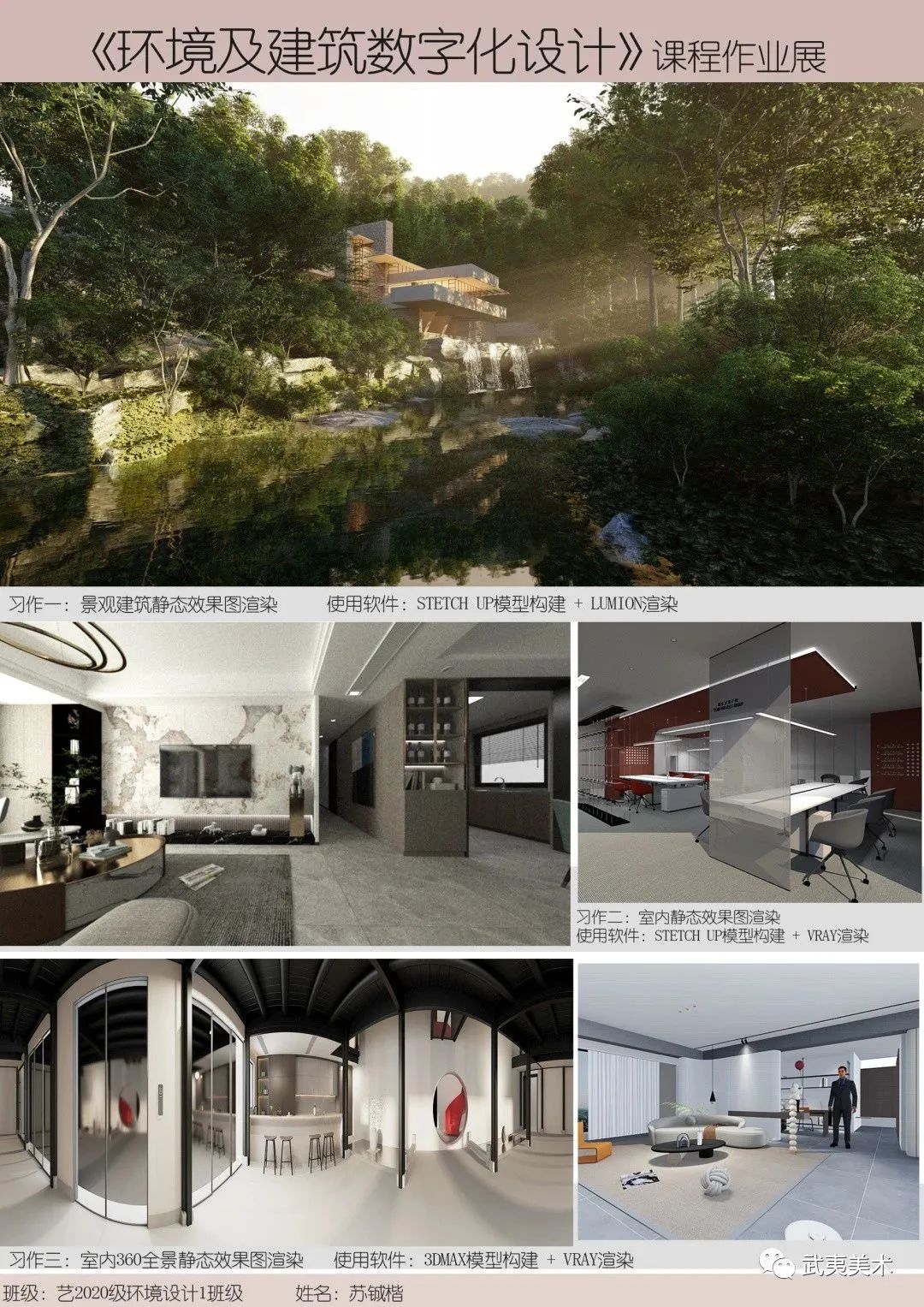

During the 48 class hours of course, students fully understand the implementation principles of virtual reality technology, and master the use of software and tools related to architectural landscape roaming animation.
The teaching purpose of this course is to enable students to understand the production principles of environmental and architectural digital art multimedia through classroom experimental teaching, master the methods, logical skills, and technical means of virtual reality design, and lay the foundation for future professional creation.



The works of this exhibition are from the course assignments of “Digital Design of Environment and Architecture” by 78 students from two classes of environmental design major in 2020.
In these works, students use 3D max/simulation/Sketchup, Promiere, Aftereffect, and other modeling and video editing and shading software to complete indoor or outdoor dynamic roaming and 360 degree rendering—— Teacher Chen Kaifeng, Department of Environmental Design 01 Qiao Ziwen 02 Li Yang 03 Su Chengkai 04 Xue Xindie 05 Huang Danni 06 Zhao Dongfei 07 Peng Yi 08 Li Siying 09 Luo Yajing 10 Zhang Xinyue
.
“Digital Design of Environment and Architecture” is one of the professional compulsory experimental courses for students majoring in environmental design, and is one of the important courses in the “creativity+process” teaching system.
The course relies on the professional group of cultural and creative industries, and uses comprehensive design methods to conduct systematic and specialized design practices on virtual reality technology for indoor or outdoor design works.








